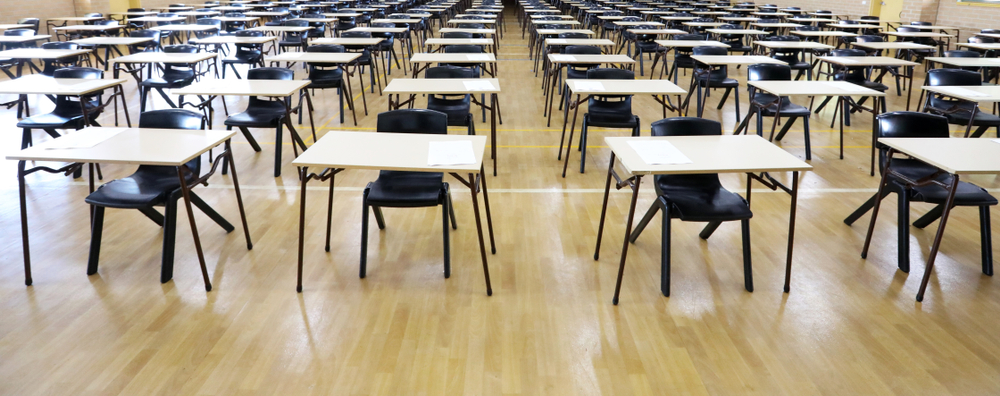How collegiality can influence judicial decisions

When dissenting from an ideological foe, judges from federal courts of appeal use an estimated 8.3 fewer negative emotional words if the author of the majority opinion works in the same building.
Apparently, it can be uncomfortable riding on an elevator with someone whose opinion you have called “plainly wrong.”
Or worse—an “embarrassment” or “destructively novel,” according to a trio of academics who researched the phenomenon.
They say extensive literature on judicial behavior has identified four factors that account for decisions made by judges: dictates of the law; ideology; achieving goals on judicial policy; and background characteristics (such as race, gender and prior professional experience). But in The Elevator Effect, authors examined a fifth consideration: collegiality.
“We saw that judges said over and over again that collegiality matters, but it was not getting enough scholarly play,” says Morgan L.W. Hazelton, a lawyer and associate professor of political science at Saint Louis University who co-authored the book with Rachael Hinkle and Michael Nelson.
The three scholars responsible for this curious statistic posit that human nature is a cause. So much research treats “judges acting as individuals,” Nelson says. But the Penn State University political science professor adds that it does not account for them “making decisions in group contexts. As anybody who works with people in a group knows, group dynamic matters a lot for how decisions get made.”
The authors, who met as fellow PhD students at Washington University in St. Louis, fill this academic void with what the authors say is a first-of-its-kind comprehensive statistical examination of the role of interpersonal relationships among judges on judicial decision-making.
Their seven-year effort produced a legion of conclusions, including many addressing the impact of collegiality on the role that ideology plays in how appellate judges vote. Conventional wisdom is that ideology drives judicial decisions, but that’s more so the case for “appellate judges who don’t know each other super-well,” says Hinkle, a lawyer and associate political science professor at the State University of New York Buffalo. But when “appellate judges … know each other very well, in a lot of scenarios, the effects of ideology goes away.”
What ‘collegial’ means
Collegiality is an imprecise term. To define it for their research, the scholars took advantage of the geographic structure of the appellate courts. Some judges work in the same building. Others are dispersed across the circuit in which they serve. Since frequency of contact is greater amongst judges who work in the same courthouse, the authors focused on the role of collegiality on shared-workspace jurists.
Much of the statistical analyses and conclusions come from their creation of a database of all published federal courts of appeal Fourth Amendment search and seizure decisions from 1953 to 2010. This collection of decisions offered useful characteristics. There are an abundance of such opinions—including many dissents—and the subject involves discrete legal issues. And importantly, the opinions fit into a traditional ideological spectrum.
Their analytical work was supplemented with interviews of seven federal appeals court judges, four former federal appeals court clerks and five former U.S. Supreme Court clerks. The identities of the interviewees are not revealed.
The number-crunching showed that the overall rate of concurring and dissenting opinions by federal appeals court judges is the same whether the author worked in the same or a different courthouse as the writer of the majority opinion. But two judges with different ideological views, who will frequently meet in the elevator, hallway or parking lot, are less likely to publicly disagree than two who work in different courthouses.
The rate of dissenting opinions was also affected by the amount of time judges have served together and anticipate doing so in the future. Here, the authors also examined Supreme Court data. Compared to judges who just met each other, a Supreme Court justice is 5% less likely to dissent from an opinion writer they have known at the highest end of time served together. Similarly, a federal appeals court judge is 3% less likely to dissent.
While these numbers might seem modest, based on the relative rarity of dissent in cases they studied from the Supreme Court (21% of cases) and federal appeals courts (a little more than 7%), the differences are quite notable and represent almost a quarter of the overall dissent rate for the Supreme Court and almost half of the rate at federal appeals courts.
The ideologically opposite Chief Justice William Rehnquist and Justice Ruth Bader Ginsburg spent over a decade together on the high court. During their first two years, Rehnquist dissented from 47% of Ginsburg’s majority opinions, and she dissented from 40% of his. Cut to the last two years of their cotenure, and it fell to 19% and 27%, respectively.
While their time together did not erase their fundamental disagreements, it does appear to have dampened their affect. “What was different between those first and last two years?” Hinkle asks. “Various things. But primarily, how much they knew each other.”
Civil dissent
The political scientists’ work also revealed that collegiality plays a part in how dissent is expressed. The phrase “I dissent” is considered a rude form of signoff. There are more polite ways in which judges can express disagreement, such as characterizing their dissent as being done “respectfully” or while also acknowledging some agreement with the majority opinion. Examining this closing phraseology, the authors determined that federal appeals court judges are “noticeably less willing” to use a blunt “I dissent” if they anticipate spending more time in the future with the majority opinion writer.
Ironically, a book examining the role of interpersonal relationships was partly written during the pandemic and public embrace of working from home.
“If I were to tell Chief Justice Roberts something that he should do as head of the federal judiciary, it is to encourage opportunities for judges to get together and know each other—in person,” Nelson says. It would be a mistake if, coming out of COVID-19, “judges adopt a ‘Hey, we can keep doing all of this stuff by Zoom?’ approach.”
Hazelton echoes the point. “Judging on appellate courts is fundamentally about relationships.”
This story was originally published in the August-September 2023 issue of the ABA Journal under the headline: “The Elevator Effect: How collegiality can influence judicial decisions.”
Randy Maniloff is an attorney at White and Williams in Philadelphia and an adjunct professor at Temple University Beasley School of Law.



